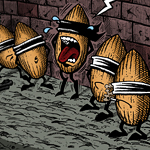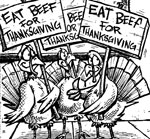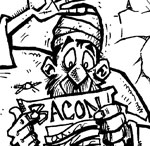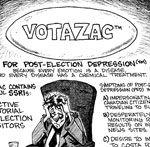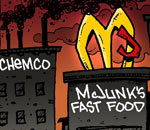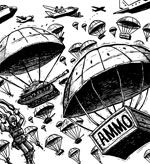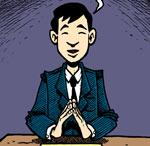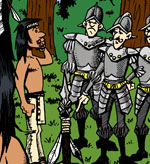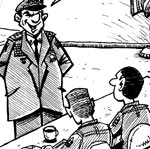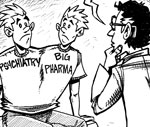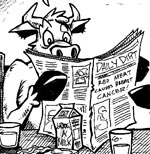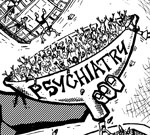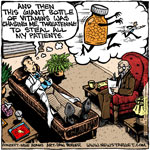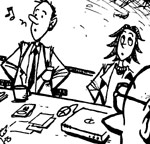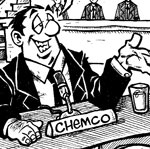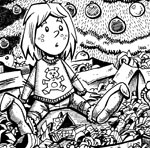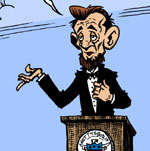Andrographis Paniculata Benefits for Colds, Flu, and Much More
| Share on Facebook | Share on Twitter | Share on Google+ |
The herb Andrographis paniculata is flowering plant in a family of flowering plants that distinguished by having pods that "explode" into bloom. It is in the same family as the Chinese violet, the nerve plant, the polka dot plant, and the Texas popping petunia, all beautiful garden plants with, well, odd presentation. Commonly known as Andrographis, this beautiful herb grows up to about a meter (3') tall and bears flowers with four petals of purple and white.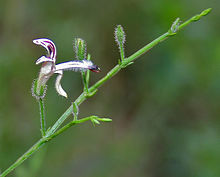
As a medicinal herb, the distinguishing feature of Andrographis is that every part of the plant is incredibly bitter. The traditional herbalists of Bengal, in northeastern India, referred to it as maha-titaor "King of Bitters." In Ayurveda, the plant is known as kalmegh, or "dark cloud." Its name in Unani medicine, chiritayeh, has a similar meaning. In the traditional healing practices of China, Thailand, Malaysia, and Indonesia, as well as South Asia and the Middle East, Andrographis is used to "detoxify" by being so bitter it chases toxic substances out of the body.
And if you have ever taken a tea or tincture of this herb, you would readily understand why doctors used to describe its action this way. It is really, really bitter, unless you take an encapsulated form.
How Traditional Medicine Used Andrographis
The traditional healing systems that used and use Andrographis the most are the Ayurvedic system (of earlier, Hindu origins) and the Unani system (of later, Muslim origins) in South Asia, the part of the world now occupied by Pakistan, Bhutan, Nepal, India, and Bangladesh. These healing systems used the herb for detoxification.
If you went to the herbal healer and reported you had what most native English speakers would call a "stomach bug," you might be given a tea of Andrographis to cause the sudden purgation of the infection to make you well. If you went to the herbal healer with a case of worms (which, not to be gross, you would notice in stool or in undergarments), you might be given several doses of tea to help your body expel the parasites.
Modern science understands how this herb has this kind of activity very well. It's all in the taste of the herb. In nature, most poisonous substances happen to taste bitter. When human beings taste something just a little bitter, a nerve reflex triggers the release of just a little stomach acid to make sure the potential poison is very thoroughly digested. When human beings taste something really awfully bitter, they may experience vomiting or diarrhea that gets rid of the toxin.
More than one historical reference to this herb notes that when it is given to colicky babies, they stop crying. Well, yes. If you were a baby and crying got this nasty stuff put in your mouth, you might quit crying, too.
There is absolutely no doubt that this herb works for these applications, but most of don't care to swish bitter herbal teas around in the mouth to treat stomach bugs. And most of the modern applications of Andrographis don't really involve this aspect of the herb. Instead, modern herbal medicine uses this herb for its ability to bolster the immune system and to modify the reactions that cause blood clotting and allergic reactions.
Using Andrographis to Treat Colds and Related Conditions
The most common use of Andrographis today is in treating colds and tonsillitis. A study in Thailand recruited 152 adults who had tonsillitis to see if the herb would relieve pain. Tablets of Andrographis extract worked as effectively as Tylenol (acetaminophen). Of course, if you are like me, when you read that, you might ask yourself, "Why didn't they just take Tylenol?" The reason is that some people who have liver disease should not take Tylenol, and Andrographis not only does not aggravate hepatitis, it is generally hepatoprotective.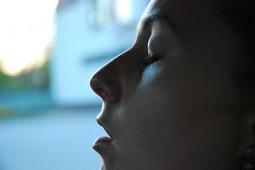
There are also some people who cannot take Tylenol because of upset stomach. This herb will not cause an upset stomach, and if you don't taste the herb, it won't trigger release of extra stomach acid.
A study at the University of Chile recruited 158 adults who had common for tracking the effects of taking 1,200 mg of Andrographis extract every day on colds symptoms. The benefits of the herb did not kick into until the second day, but once the herb started to work, it worked quite well. The participants in the study who took the herb reported significant relief from what a lot of us call "snot." There was not as much congestion, and there was not as much nose blowing, either.
Taking Andrographis eased sore throat, made it easier to sleep, and reduced fatigue. It did not make these symptoms totally go away. It was just a lot more effective than taking nothing at all, and no one in the Chilean study reported any side effects.
There is also a product known as Kan Jang that combines Andrographis with the herb we used to call Siberian ginseng. (Actually, if you are not an American, you still can. Our Congress passed a law in 2002 that made it unlawful for me to refer to any product not grown in the USA as "Siberian ginseng." This somehow fights terrorism, we are told. So I'm not using the forbidden term.) This is the herb now labeled as "eleuthero."
Eleuthero is a well-known immune stimulant. Andrographis is a well-known anti-inflammatory. In a clinical study of the combination for treating colds in children aged 4 to 11, the combination product was found to be especially useful for treating stopped up noses. If you are a parent, you are probably familiar with this phenomenon. Anything that reduces the production of mucus makes keeping the cold from spreading a lot easier. The test involving 4- to 11-year-olds did not report any side effects.
Kan Jang has also been tested in adults. These tests have found that it is usually better for stopping mucus production and relieving sore throat than it is for stopping cough or relieving eye irritation.
Andrographis definitely works for treating colds and tonsillitis. But why would you use it instead of zinc or echinacea?
The answer is simple. Zinc works best at preventing colds. Echinacea works best at treating symptoms of colds that drag on more than three or four days. If you are looking for relief for days two and three, Andrographis and Kan Jana are better than the other two natural cold remedies.
And all three are better than most over the counter remedies. Antihistamines stop sneezing but make your throat scratchy. In the US, ephedrine has been banned, and to get Sudafed you will have to stand in line to have your ID registered to keep you from selling your cold remedy to a methamphetamine maker. Vitamin C works, but just the first day, and antibiotics don't help at all. Keeping Andrographis on hand for treating colds that you don't catch in time with zinc and vitamin C is a good idea. But there are many more applications for the herb.
Andrographis for Sinus Infections
A lot of the recommendations for treating colds have to be fine tuned for treating sinusitis. For instance, any old vitamin C will probably help if you have a cold. If you have sinusitis, however, you need vitamin C with bioflavonoids to help break up the adhesive protein that holds mucus in place in your sinuses. Zinc will help you stop a cold in its early stages. But if you take more and more zinc to try to treat sinusitis, you may wind up reducing your immunity rather than increasing it. (You can tell you are taking too much by the way zinc tablets taste. If they taste bad, your body is telling you that you have taken enough.)
If you are treating a cold, you are treating a viral infection. If you are treating sinusitis, you are probably treating Streptococcus pneumoniae and Haemophilus influenzae. These are the most common causes of bacterial sinusitis, although the hospital-borne bacteria Staphylococcus aureus and Pseudomonas cause especially persistent symptoms. Your doctor can give you an antibiotic, of course, but, as you probably have been reading in the news, bacteria develop ways to defeat antibiotics even faster than the pharmaceutical companies can create new drugs.
Herbs, however, are antibacterial rather than antibiotic. The difference is that an antibacterial kills bacteria even if they are not in an active growth phase (which means the bacteria can't "play dead" and escape treatment) whereas most antibiotics are effective only against actively multiplying bacteria. Moreover, bacteria can develop resistance to antibiotics but they don't develop resistance to herbs.
There are things Andrographis can do for treating sinusitis and things it can't. What the herb can do is to stop the processes that allow Streptococcus to attach itself to the lining of your sinuses. This means that expelling mucus gets rid of a lot more of this kind of bacterium and you will get better faster.
Another Andrographis can do to help fight sinusitis is to reduce congestion and the stickiness of mucus. Again, I don't mean to be crude, but I do mean to get the idea across, when I tell you that you are a lot less likely to have "boogers" if you take Andrographis. But just as this herb does not heal colds instantly, it does not heal sinusitis instantly, either. I recommend that you use Andrographis along with any kind of vitamin C with bioflavonoids, zinc if you need it, and goldenseal to fight other kinds of bacteria that may be infecting your sinsuses along with strep.
Andrographis for Herpes
There is no condition for which misguided natural medicine can cause more problems than herpes (unless it's shingles, which is a delayed reaction to a virus in the same family as herpesvirus). People get the idea that boosting the immune system is always a good thing. In herpes, it's not.
Doctors and researchers used to believe that the first infection with the herpesvirus (which is just one word) caused severe symptoms, and then the virus would retreat to nerve cells. Nerves grow very slowly so they are a very stable home for the herpesvirus. The virus would simply hibernate there until heightened activity of the immune system essentially sent a message to the herpesvirus "Gotta multiply or the immune system is going to kill you" and it would start multiplying again.
Even at this stage, it is not the virus that caused the pain, inflammation, and tissue damage. It is the immune system. Anything that stimulates the immune system into a high level of activity, such as an entirely different kind of infection or severe stress, could trigger a herpes outbreak.
Doctors and herpes researchers still believe this is more or less what happens with herpes, except for one important difference. It is now believed that up to 80 per cent of people who are infected with herpes don't develop a severe outbreak at first. There can be little tingling outbreaks of itching without blisters instead of the oozing, distressing sores that a minority of herpes sufferers know too well.
Can Andrographis Stop Herpes Outbreaks?
Two laboratory studies have shown that it can stop the replication of the virus in the test tube. But what you need to know is that the virus starts multiplying before an outbreak of blisters. If one waits until the symptoms appear before using the herb, then it will primarily act as an anti-inflammatory.
Most of the time if you are accessing a web page to see if Andrographis is anti-inflammatory, you will read something like this:
"Previous studies showed that the ethyl acetate fraction of Andrographis paniculata (AP) possessed anti-inflammatory activity. This study further isolated these active compounds from bioactivity-guided chromatographic fractionation and identified eight pure compounds. Reporter gene assay indicated that 5-hydroxy-7,8-dimethoxyflavone, 5-hydroxy-7,8-dimethoxyflavanone, a mix of beta-sitosterol and stigmasterol, ergosterol peroxide, dehydroandrographolide, and a new compound, 19-O-acetyl-14-deoxy-11,12-didehydroandrographolide, significantly inhibited the transcriptional activity of NF-kappaB in LPS/IFN-gamma stimulated macrophages. All of the compounds significantly decreased TNF-alpha, IL-6, macrophage inflammatory protein-2 (MIP-2), and nitric oxide (NO) secretions from LPS/IFN-gamma stimulated cells."
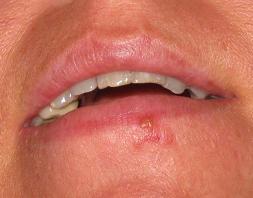
I'm a chemist and I research herbs for a living and I can't tell you what that means in practical terms. I can tell you that other chemists and researchers can't, either.
What I can tell you is that there is good laboratory evidence that Andrographis may stop the replication of the virus, the step that occurs before an outbreak. This means that if you are undergoing stress, or if you are dealing with a serious infection with something else, then taking Andrographis prophylactically may reduce the risk of an outbreak. Unfortunately, there is no way to prove a negative, "I took the herb so I didn't break out." We can just speculate in terms of what might have been, but it's always speculation.
Also, I can tell you that Andrographis may make your symptoms more bearable, although it is not likely to eliminate them. If I had herpes, I would use Andrographis in prevention, taking an encapsulated form, 60 to 300 mg a day, but no more. During an outbreak I might continue taking Andrographis, but they would not be my first choice for symptoms. I would apply a cream made with the herb lemon balm (also known as Melissa), and I might use a Chinese medicine called Kudzu Decoction. If you would like to know more about these treatments, please let a comment or a question in the Comments Box.
Andrographis for Lyme Disease
There is an Ayurvedic herb I actually recommend for Lyme disease, only it's not Andrographis. It's coleus, the source of the herb extract forskolin. Explaining why I recommend forskolin requires a little explanation of Lyme disease.
The causative agent in Lyme disease is a microorganism known as B. burgdorferi. When it enters the body, the immune system attempts to trap it at the site of the bite. A ring of inflammation surrounds the invading bacteria. This makes the characteristic erythema migrans, or target lesion, a ring-shaped rash.
Sometimes the lymphatic system is able to contain the infection, but frequently it escapes to infect the central nervous system and the joints. Whether the bacterium is trapped or escapes depends in part on whether the skin has an adequate supply of vitamin D.
Skin cells that have an adequate supply of vitamin D are better able to secrete an immune hormone known as interleukin-8 (IL-8), which signals white blood cells that a bacterium has invaded the skin. Vitamin D continues to be important in fighting Lyme disease as the infection spreads beyond the skin, enabling cells in other tissues to send out an alarm to the immune system.
Once inside the body, B. burgdorferi becomes a stealth invader. In the ticks and mice that host the bacterium through much of its life cycle, the bacterium has a thick cell wall and a spiral shape. If it maintained its thick cell wall and its spiral shape, an antibiotic could be found to control it. However, in the human body B. burgdorferi can shed its cell wall and take on a different shape. When under attack from antibiotics or the immune system, it simply changes shape so it is not recognized.
Unfortunately, the stealth bacterium produces a “shock protein” the immune system does recognize. The immune system senses this protein on the surface of nerves. It sends antibodies to latch onto the protein and neutralize it. However, in the process of attempting to neutralize the protein it interferes with the function of the nerves in ways that produce a bewildering array of symptoms. Certain nerves are immune to this process: those that have an adequate supply of the messenger chemical cAMP and those that have adequate supplies of vitamin A.
Where does Forskolin Come in with All of This?
Forskolin activates the enzyme adenylate cyclase, which increases the amount of the regulator cyclic adenosine monophosphate (cAMP) in cells. This enzyme is found in all cell membranes and is crucial to preventing autoimmune damage to the membrane. It is likely that taking forskolin can offset some of the symptoms of Lyme disease associated with nerve cell irritation, such as headache, tingling, burning, numbness, stabbing sensations, tremor, unexplained lactation, or severe hangover.
People who have unusually low blood pressure or who have peptic ulcers should not take forskolin. Forskolin also should be used with caution by people who take the asthma medication theophylline (Theo-Dur), since it increases the medication’s effects on the lungs. Take forskolin extract, 5–10 mg 3 times a day (or 50 mg of 18% forskolin extract 3 times a day).
Andrographis and Cancer
There are over 40 studies that report promising results for the use of various chemicals found in Andrographis in stopping the growth of cell cultures of various kinds of cancer. I would not be surprised if an important anti-cancer drug is eventually isolated from this herb. However, for the time being, I don't recommend this herb as any part of any supportive treatment for cancer.
The reason is that squirting a purified chemical into a test tube or Petri dish to kill cancer cells is not at all like taking the herb, the digestive tract breaking it down, or not, bacteria in the colon changing it, or not, enzymes in the liver activating it, or not, and so on. There are similar problems for any kind of chemotherapy, of course. But because there are other, better documented treatments for cancer, both natural and conventional, I can't recommend Andrographis for cancer yet.
How to Use Andrographis
The best way to use Andrographis is to take pills or capsules of standardized amounts of andrographolides. You will find these in supplements labeled "Andrographis paniculata extract." It takes about 60 mg a day to have any effect at all, and optimal dosage is usually about 300 mg a day.
Side Effects of Andrographis Paniculata
Is Andrographis safe? There are very few reports of Andrographis side effects, except when it is used in dosages of 1,500 mg a day and higher. Andrographis benefits are usually more noticeable when you start it sooner, rather than later, so don't hesitate to use it as prevention for colds and herpes outbreaks.
Some studies have found that Andrographis is more effective against infections (most of the studies involved studies of malaria parasites) when combined with curcumin, the antioxidant found in turmeric. I can't guarantee you will get better faster if you take both products, but I personally would use them both if I were taking them myself.
Selected References:
ALBELDA, S.M.,SMITH C.W.&WARD;, P.A.(1994).Adhesion molecules and inflammatory injury.FASEB J.,8,504-512.
AMROYAN, E.,GABRIELIAN, E.,PANOSSIAN, A.,WIKMAN, G.&WAGNER;, H.(1999).Inhibitory effect of andrographolide from Andrographis paniculata on PAF-induced platelet aggregation.Phytomedicine,6,27-31.
ARFORS, K.E.,LUNDBERG, C.,LINDBOM, L.,LUNDBERG, K.,BEATTY, P.G.&HARLAN;, J.M.(1987).A monoclonal antibody to the membrane glycoprotein complex CD18 inhibits polymorphonuclear leukocyte accumulation and plasma leakagein vivo.Blood,69,338-340.
ATTA, U.R.,HARVEY, K.&SIDDIQUI;, R.A.(1999).Interleukin-8: An autocrine inflammatory mediator.Curr. Pharmaceutical. Design,5,241-253.
BARRITT, G.J.&LEE;, A.M.(1985).Effects of electrical stimulation and an intracellular calcium chelator on calcium movement in suspensions of isolated myocardial muscle cells.Cardiovasc. Res.,19,370–377.
BROWN, E.(1997).Neutrophil adhesion and the therapy of inflammation.Semin. Hematol.,34,319-326.
BUTCHER, E.C.(1991).Leukocyte-endothelial cell recognition: three (or more) steps to specificity and diversity.Cell,67,1033-1036.
CASIMIR, C.M.&TEAHAN;, C.G.(1994).The respiratory burst of neutrophils and its deficiency. In:Immunopharmacology of Neutrophils. ed. Hellewell, P.G. & Williams, T.J. pp.27-54London: Academic Press.
CASTAGNA, M.,TAKAI, Y.,KAIBUCHI, K.,SANO, K.,KIKKAWA, U.&NISHIZUKA;, Y.(1982).Direct activation of calcium-activated, phospholipid-dependent protein kinase by tumor-promoting phorbol esters.J. Biol. Chem.,257,7847-7851.
CHIOU, W.F.,CHEN, C.F.&LIN;, J.J.(2000).Mechanisms of suppression of inducible nitric oxide synthase (iNOS) expression in RAW 264.7 cells by andrographolide.Br. J. Pharmacol.,129,1553-1560.
CHIOU, W.F.,LIN, J.J.&CHEN;, C.F.(1998).Andrographolide suppresses the expression of inducible nitric oxide synthase in macrophage and restores the vasoconstriction in rat aorta treated with lipopolysaccharide.Br. J. Pharmacol.,125,327-334.
CHOUDHURY, B.R.&PODDAR;, M.K.(1984).Andrographolide and kalmegh (Andrographis paniculata) extract: in vivo and in vitro effect on hepatic lipid peroxidation.Methods Find Exp. Clin. Pharmacol.,6,481-485.
DREYER, W.J.,SMITH, C.W.,MICHAEL, L.H.,ROSSEN, R.D.,HUGHES, B.J.,ENTMAN, M.L.&ANDERSON;, D.C.(1989).Canine neutrophil activation by cardiac lymph obtained during reperfusion of ischemic myocardium.Circ. Res.,65,1751-1762.
EVERITT, E.A.,MALIK, A.B.&HENDEY;, B.(1996).Fibronectin enhances the migration rate of human neutrophilsin vitro.J. Leukoc. Biol.,60,199-206.
FERRARI, R.,CECONI, C.,CURELLO, S.,CARGNONI, A.,ALFIERI, O.,PARDINI, A.,MARZOLLO, P.&VISIOLI;, O.(1991).Oxygen free radicals and myocardial damage: protective role of thiol-containing agents.Am. J. Med.,91,95S-105S.
FINKEL, T.(1998).Oxygen radicals and signaling.Curr. Opin. Cell. Biol.,10,248-253.
FONTANA, L.,GIAGULLI, C.,MINUZ, P.,LECHI, A.&LAUDANNA;, C.(2001).8-Iso-PGF2alpha induces beta 2-integrin-mediated rapid adhesion of human polymorphonuclear neutrophils: a link between oxidative stress and ischemia/reperfusion injury.Arterioscler. Thromb. Vasc. Biol.,21,55-60.
FRATICELLI, A.,SERRANO, C.V.J.,BOCHNER, B.S.,CAPOGROSSI, M.C.&ZWEIER;, J.L.(1996).Hydrogen peroxide and superoxide modulate leukocyte adhesion molecule expression and leukocyte endothelial adhesion.Biochim. Biophys. Acta,1310,251-259.
JACOBSON, P.B.&SCHRIER;, D.J.(1993).Regulation of CD11b/CD18 expression in human neutrophils by phospholipase A2.J. Immunol.,151,5639-5652.
KRULL, M.,KLUCKEN, A.C.,WUPPERMANN, F.N.,FUHRMANN, O.,MAGERL, C.,SEYBOLD, J.,HIPPENSTIEL, S.,HEGEMANN, J.H.,JANTOS, C.A.&SUTTORP;, N.(1999).Signal transduction pathways activated in endothelial cells following infection with Chlamydia pneumoniae.J. Immunol.,162,4834-4841.
LAWSON, M.A.&MAXFIELD;, F.R.(1995).Ca++-and calcineurin-dependent recycling of an integrin to the front of migrating neutrophils.Nature,376,75-79.
LEW, P.D.,WOLLHEIM, C.B.,WALDVOGEL, F.A.&POZZAN;, T.(1984).Modulation of cytosolic-free calcium transients by changes in intracellular calcium-buffering capacity: correlation with exocytosis and O2?production in human neutrophils.J. Cell. Biol.,99,1212-1220.
LEY, K.(1996).Molecular mechanisms of leukocyte recruitment in the inflammatory process.Cardiovasc. Res.,32,733-742.
LU, X.L.,ZHANG, S.L.&WANG;, Z.S.(1981).Analysis of andrographolide compounds. I. Ion pair high performance liquid chromatographic analysis of andrographolide derivatives.Acta. Pharmaceutica Sinica,16,182-189.
PubMed,
PABST, M.J.(1994).Priming of Neutrophils. In:Immunopharmacology of Neutrophils. ed. Hellewell, P.G. & Williams, T.J. pp.195-221. London: Academic Press.
PERRY, I.,BUTTRUM, S.M.&NASH;, G.B.(1993).Effects of activation on adhesion of flowing neutrophils to cultured endothelium: time course and inhibition by a calcium channel blocker (nitrendipine).Br. J. Pharmacol.,110,1630-1634.
ROTA, C.,CHIGNELL, C.F.&MASON;, R.P.(1999).Evidence for free radical formation during the oxidation of 2'-7'-dichlorofluorescin to the fluorescent dye 2'-7'-dichlorofluorescein by horseradish peroxidase: possible implications for oxidative stress measurements.Free Radic Biol. Med.,27,873-881.
SERRANO, C.V.J.,MIKHAIL, E.A.,WANG, P.,NOBLE, B.,KUPPUSAMY, P.&ZWEIER;, J.L.(1996).Superoxide and hydrogen peroxide induce CD18-mediated adhesion in the postischemic heart.Biochim. Biophys.
SHEN, Y.C.,CHEN, C.F.&CHIOU;, W.F.(2000).Suppression of rat neutrophil reactive oxygen production and adhesion by diterpenoid lactone andrographolide.Planta Medica,66,314-317.
SHEN, Y.C.,CHEN, C.F.,WANG, S.Y.♪, Y.J.(1999).Impediment to calcium influx and reactive oxygen production accounts for the inhibition of neutrophil Mac-1 up-regulation and adhesion by tetrandrine.Mol. Pharmacol.,55,186-193.
SHEN, Y.C.,SUNG, Y.J.&CHEN;, C.F.(1998).Magnolol inhibits Mac-1 (CD11b/CD18)-dependent neutrophil adhesion: relationship with its antioxidant effect.Eur. J. Pharmacol.,343,79-86.
TANDON, R.,SHA'AFI, R.I.&THRALL;, R.S.(2000).Neutrophil ?2-integrin upregulation is blocked by a p38 MAP kinase inhibitor.Biochem. Biophy. Res. Commun.,270,858-862.
THASTRUP, O.,DAWSON, A.P.,SCHARFF, O.,FODER, B.,CULLEN, P.J.,DROBAK, B.K.,BJERRUM, P.J.,CHRISTENSEN, S.B.&HANLEY;, M.R.(1989).Thapsigargin, a novel molecular probe for studying intracellular calcium release and storage.Agents Actions,27,17-23.
WERR, J.,ERIKSSON, E.E.,HEDQVIST, P.&LINDBOM;, L.(2000).Engagement of B2integrins induces surface expression of ?1integrin receptors in human neutrophils.J. Leukoc. Biol.,68,553-560.
WILLIAMS, F.M.(1994).Role of neutrophils in reperfusion injury. In:Immunopharmacology of Neutrophils. ed. Hellewell, P.G. & Williams, T.J. pp.245-257London: Academic Press.
YAMAMORI, T.,INANAMI, O.,NAGAHATA, H.,CUI, Y.&KUWABARA;, M.(2000).Roles of p38 MAPK, PKC and PI3-K in the signaling pathways of NADPH oxidase activation and phagocytosis in bovine polymorphonuclear leukocytes.FEBS Lett.,467,253-258.
-
Skin CareMen Skin Care
-
Free ResourcesFree eBooks
-
Health is not simply the absence of sickness.Hannah Green
-
What We RecommendIf you do an analysis of the ingredients in a bottle of
 Total Balance and compare with other products you will find that it provides exceptional value for money…even against simple mass produced products with lower bottle costs.
Total Balance and compare with other products you will find that it provides exceptional value for money…even against simple mass produced products with lower bottle costs.
-
